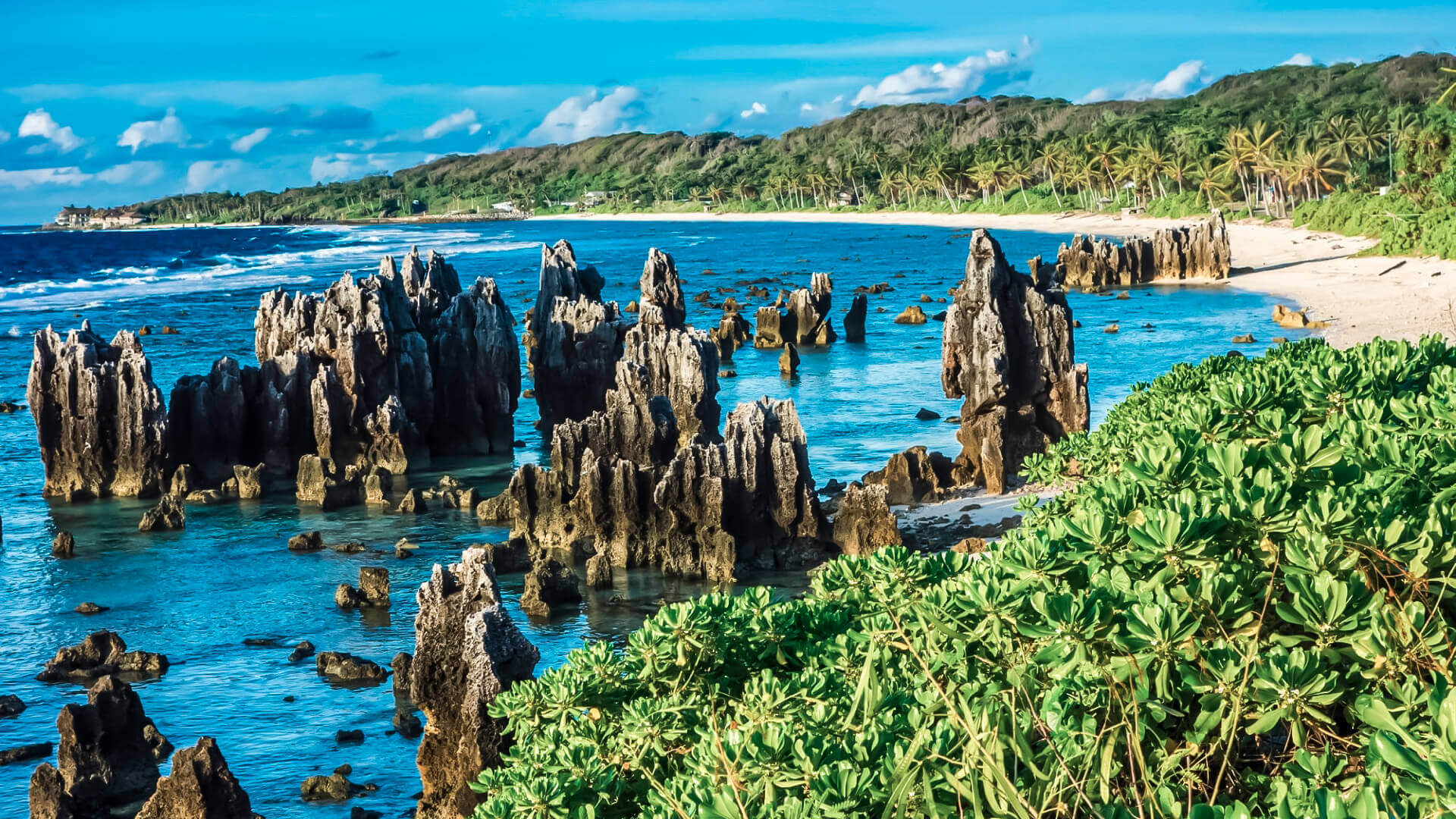Nauru was seized and claimed as a colony by the German Empire in the late nineteenth century. It was settled by indigenous peoples from Micronesia and Polynesia. Nauru became a League of Nations mandate managed by Australia, New Zealand, and the United Kingdom after World War I. Nauru was held by Japanese forces during World War II, but was bypassed by the Allied push across the Pacific. Following the war’s conclusion, the nation was placed under UN trusteeship. Nauru achieved independence from the United Kingdom in 1968.
Nauru is a phosphate rock island with abundant resources near the surface that made strip mining very simple. It contains some residual phosphate deposits that are commercially unviable for exploitation as of 2011. During the late 1960s and early 1970s, Nauru had the greatest per capita GDP of any sovereign state in the world. When the island’s phosphate deposits were depleted and the island’s ecology was irreparably damaged by mining, the trust created to manage the island’s riches lost value. To generate revenue, Nauru temporarily became a tax haven and money laundering hub. It received assistance from the Australian government in return for hosting the Nauru prison center from 2001 to 2008, and again in 2012. As a consequence of its reliance on Australia, many sources have classified Nauru as an Australian client state.
Nauru’s president is Baron Waqa, who leads a 19-member unicameral legislature. The United Nations, the Commonwealth of Nations, the Asian Development Bank, and the Pacific Islands Forum all recognize the nation as a member. Additionally, Nauru competes in Commonwealth and Olympic Games. Nauru was recently admitted as a member of the International Renewable Energy Agency (IRENA). In April 2016, the Republic of Nauru became the International Monetary Fund’s 189th member.


